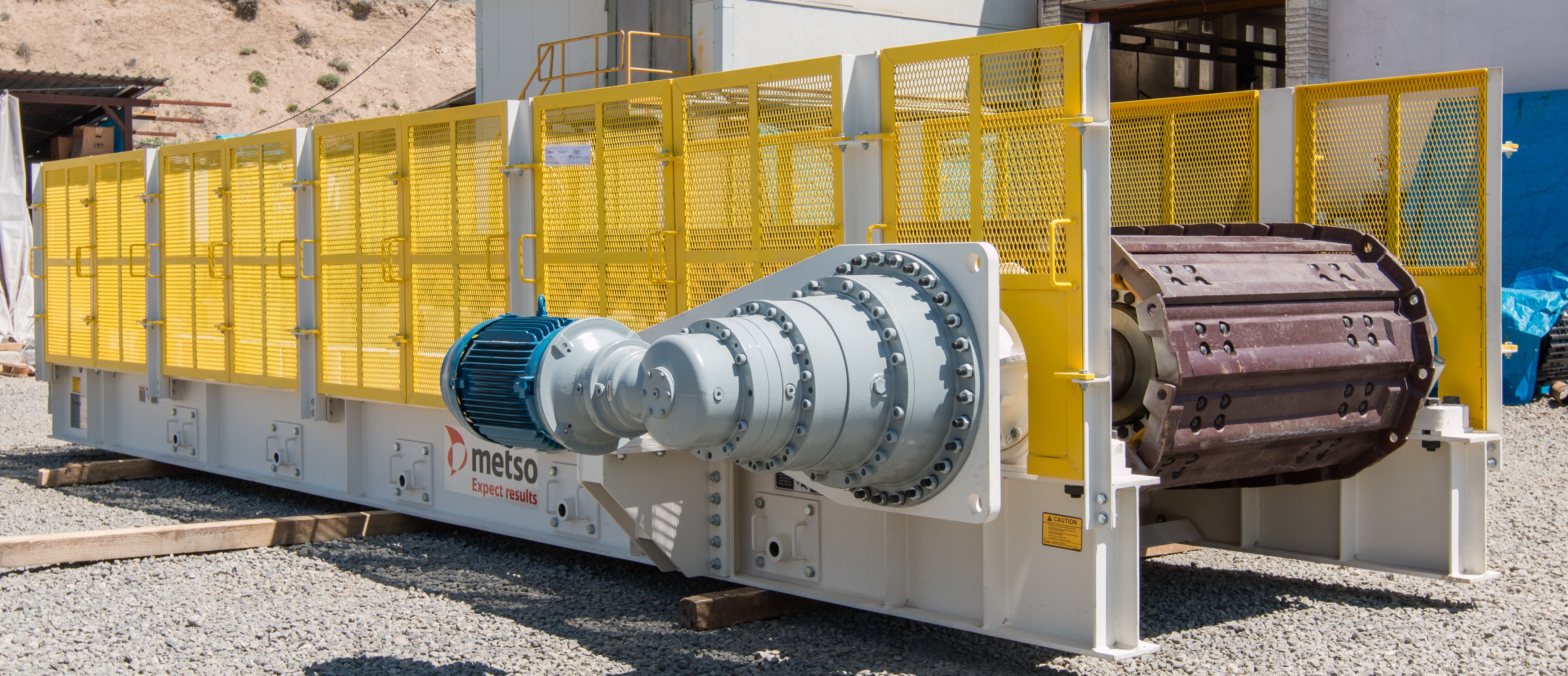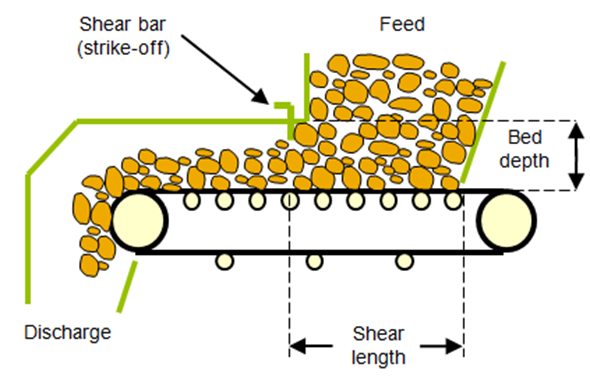What information is required when sizing an apron feeder?
When sizing an apron feeder and respective drive system (motor), as with a lot of equipment in the mining industry, experience and knowledge of the entire process is valuable. Apron feeder sizing requires basic knowledge of plant data to be able to accurately fill in the criteria needed for a vendor’s “application data sheet” (or however the vendor receives their information).
Basic criteria that should go into properly sizing an apron feeder should include feed rate (peak and normal), material characteristics (such as moisture, gradation and shape), maximum lump size of the ore/rock, bulk density of the ore/rock (maximum and minimum) and feed and discharge conditions.
However, occasionally there can be added variables to the apron feeder sizing process that should be included. A primary additional variable that vendors should be asking about is the hopper configuration. Specifically, the hopper shear length opening directly above the apron feeder. When applicable this is not only a key parameter in properly sizing the apron feeder, but also the drive system as well.
“Bulk” density – How does that affect the sizing of an apron feeder?
As stated above in the first segment, bulk density of the ore/rock is one of the basic criteria requirements that should be included for proper apron feeder sizing. Density is the weight of material in a given volume, and usually bulk density is measured as tons/cubic meter (t/m³) or pounds/cubic foot (lbs/ft³). One specific note to remember is that bulk density is used for apron feeders and not solid density like for other mineral processing equipment.
So why is bulk density so important? Apron feeders are a volumetric type feeder, which means bulk density is used to determine the speed and power (torque) needed to extract a certain tonnage per hour (tph) of material. The minimum bulk density is used to determine the speed and the maximum bulk density establishes the power (torque) needed for the feeder.
To conclude, it is important the correct “bulk” density and not “solid” density is used for apron feeders. If these calculations are incorrect, this could jeopardize the resulting feed rate for the downstream process.
Determining the hopper shear length of the apron feeder
Identifying the hopper shear length is a key component for correctly sizing and selecting an apron feeder and drive system (motor). But, how can this be determined? The hopper shear length is the dimension from the back plate of the hopper at the skirt line to the shear bar located at the exit end of the hopper. Sounds very simple, but it is key to note that this should not be confused with the dimension at the top of the hopper where material is loaded.
The goal of finding this measurement of the hopper shear length is to establish the actual shear plane line of material and where material inside the skirts are separated (sheared) from the material inside the hopper. The resistance to shear the material is typically estimated to be between 50-70% of the total force/power. Improperly identifying the shear length will result in either insufficient power (lost production) or excessive power (rising OPEX costs).


